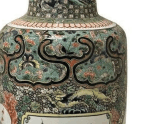
Abstract
This research paper presents an analysis of a porcelain potter figurine, which was modeled by Johann Joachim Kändler and produced as a part of the artisan series in the 18th century at Meissen Porcelain Factory in Germany. The analysis concerns the history, production technique, and technical features of the figurine. When the historical process is investigated, it can be seen that it is uncommon for those artisans, designers, and artists who work with ceramic material to depict themselves using their main material, clay. Thus, the potter themself being the subject of the matter makes this figurine both special and important in regards to the history of art. Nineteen of Kändler’s porcelain ‘potter’ figurines produced at Meissen as a part of the artisan series have been unearthed, as a result of a thorough inspection via websites on the Internet. The figurines have been found on websites of antique dealers and auction houses. These figurines, which attract high prices from buyers at auction, carry the qualifications of works of art and are valued as antiques. It can be observed that the figurines analyzed in this research have been consistently differentiated by making changes to the color of the hat, vest, trousers, and hair etc. of the figurine, despite them having nearly the same shape.
Introduction
Ehrenfried Walther von Tschirnhaus produced the first hard porcelain in Europe in 1708. After his death, hard porcelain continued to be produced by Johann Friedrich Böttger. The first hard porcelain factory in Europe started to operate on June 6, 1710, at Meissen Albrechtsburg near Dresden under the supervision of Böttger with 25 people, and with the name Royal Polish and Electoral Saxon Porcelain Manufactory (Königlich-Polnische und Kurfürstlich-Sächsische Porzellan-Manufaktur). Meissen (Meißen) porcelain is also known as Dresden porcelain or Saxon Porcelain. Böttger continued to supervise this factory until his death on March 13, 17191 – thus paving the way for the establishment of the porcelain manufacturer, currently known as ‘Staatliche Porzellan-Manufaktur Meißen GmbH’2.
Germany is counted among the European porcelain industry’s most important names, both presently and in the past. In conjunction with the Industrial Revolution during the latter half of the 18th century, the porcelain industry in Europe developed quickly resulting in high quality




